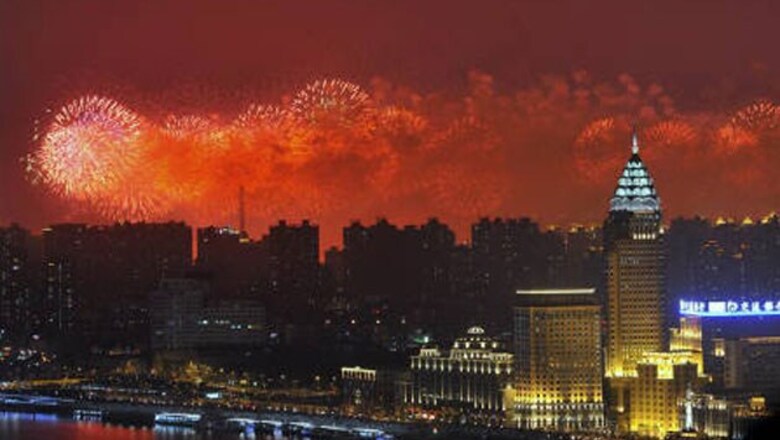
views
Shanghai: Shanghai opened its multi-billion dollar World Expo to the public on Saturday, showcasing China's booming economy and resurgent national pride, as well as the latest green technology from 189 countries.
Visitors reported long lines, and occasional angry exchanges about queue-jumping, to get into some exhibitions in the enormous Expo site, which is 20 times bigger than the last World Expo held in Spain's Zaragoza in 2008.
Separate tickets for the most popular pavilions, such as China's, were in short supply.
"This is a great event as it's a good forum to communicate with the world," said Shanghai resident Lao Chen. "But it's very disorganised. There are just too many people in China."
Another visitor, a retiree from Shanghai who gave his family name as Zhao, said he was upset not to be able to get into the hulking China pavilion, one of the few that will not be demolished when the six-month extravaganza ends on October 31.
"I will never be able to see it. I can only look at it from the outside, and what's the point of that?" he said, bitterly.
But others said they were enjoying themselves, adding they thought it was money well spent by the Chinese government.
"It's not a matter of money. It's our pride that China can host the Expo," said 30-year-old Ning Lifang, a bank clerk from the nearby city of Suzhou.
China says it has spent $ 4.2 billion -- double what it spent at the 2008 Beijing Olympics -- to host the world's largest exhibition. It is the most expensive Expo to date and local media have reported the true cost, including upgrades to the city's infrastructure, is closer to $ 58 billion.
Underscoring the political capital China is attaching to the Expo, an event that has somewhat faded from the world's view in recent years, a host of foreign leaders attended its opening, most notably French President Nicolas Sarkozy and European Commission President Jose Manuel Barroso.
Barroso, who has taken time out from the Greek debt crisis to attend, said at the opening of the EU pavilion that it was the first time for the bloc to take part in an Expo outside of European territory.
"I took the decision (to come) because of the importance I attach to this strategic partnership between the EU and China," he said.
Cosmopolitan Shanghai expects 70 million visitors will attend the Expo -- an average of nearly 400,000 per day -- though just 5 percent will be foreigners.
"The only worry is how to serve them because we may probably not have enough staff to take care of everybody," Omar Mapuri, head of the Tanzania pavilion, told Reuters.
"But otherwise we are very happy and encouraged to see people coming because that is what we came here for."
Tight Security
The Expo has been accompanied by heavy security, with x-ray checks for bags at subway stations, a very obvious police presence, and bomb-recognition pamphlets distributed to offices in the Pudong financial district.
Many countries have gone to extravagant lengths, spending huge sums to boost their image in China. Attendees include not only large countries like France, Russia and the United States, but also Turkmenistan, Oman, Costa Rica and many others.
Saudi Arabia has spent $ 146 million on its spaceship-shaped pavilion, which features date palms, while India plans to fly a cast of Bollywood stars to the site to perform.
Still, despite the hoopla and spectacle the event promises, the run-up to the Expo has not been without controversy.
Rights groups have complained about forced evictions of residents to make way for the Expo, lack of compensation and violence visited on those who complained.
Some national pavilions are also still not ready.




















Comments
0 comment